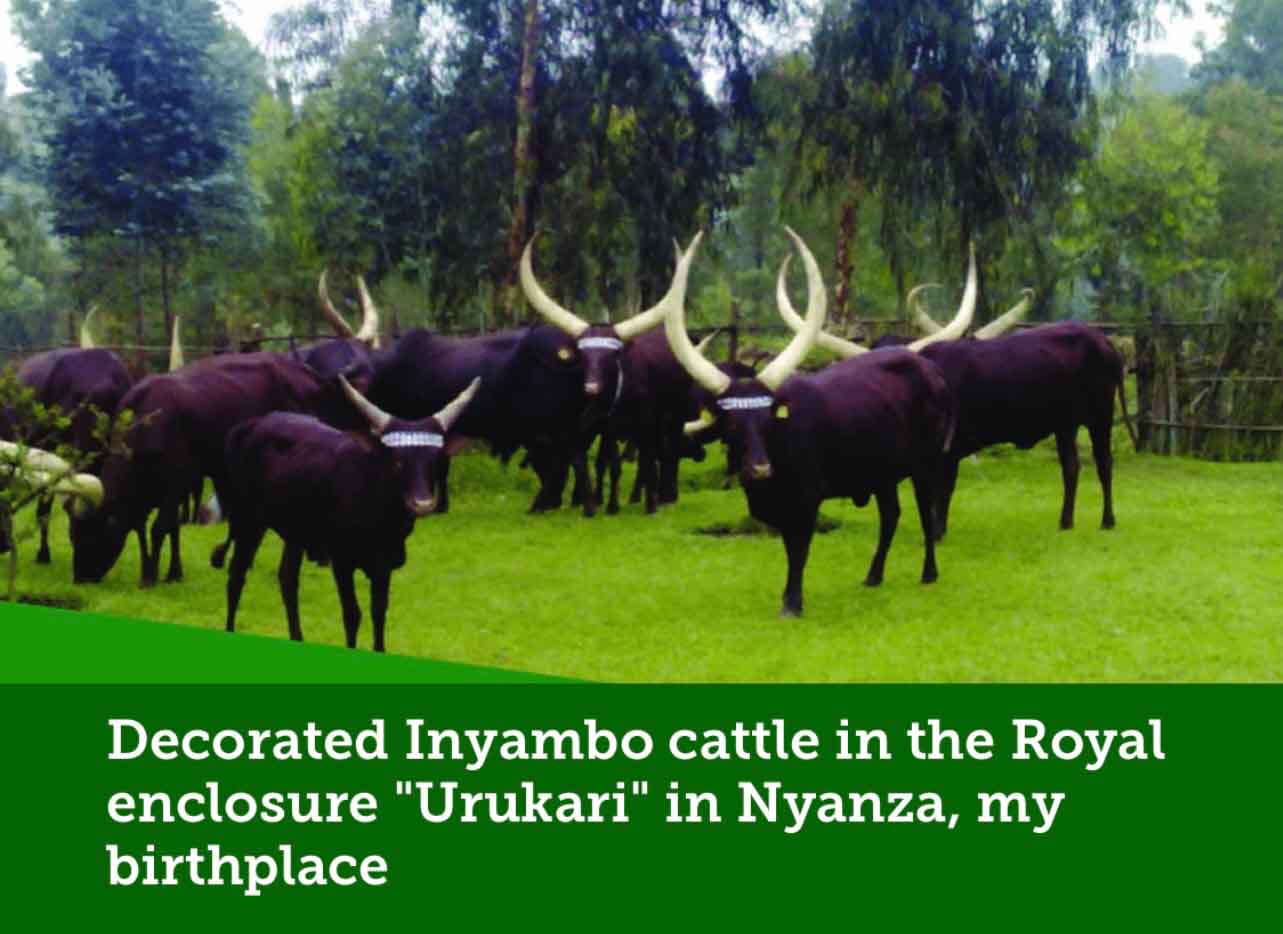Why Cattle Farming Was Always in My Veins and Now My Retirement Passion

Tribert Rujugiro Ayabatwa
My fascination with cattle farming has always puzzled my friends because my work over the years had nothing to do with cows. It is time that I share with my friends my passion for cattle farming in greater detail. Foremost, I attribute my love of cattle farming to two things, namely, my cultural heritage and the land of my birth.
Regarding our cultural heritage, unlike other societies, our cows were not reared for their meat or a commercial tradable commodity. Far from it. Cattle in our society were part of our lives symbolizing gratitude, beauty, happiness and blessing. When you wish to express profound gratitude to someone, you say, “Nguhaye Inka” or I give you a cow. When a Rwandan male wished to compliment his lover’s beauty, he would say “Afite Amaso y’inka” – meaning that her eyes are as stunningly beautiful as a cow’s eyes. In our culture when you want to wish someone well, you say, “Gira inka” which means “may you have a cow” or “Amashyo” which translates to “have thousands of cows.” You will hear in the response, “Amashongore” – “have thousands of female cows”.
Our cattle played an important role in our dietary needs, too, not least the ikivuguto, a fermented milk beverage that was, and still is, popular for its healthful qualities. The raw milk is left inside icyansi for about two days and it turns into naturally fermented milk, ikivuguto when it has sufficiently fermented. Umubanji is liquid, but ikivuguto is thick gel. When ikivuguto is available, it is almost always drunk with meals and appears frequently in the Rwandan diet. It is consumed by children, women and men alike. After the churning is completed, igisabo is tipped to pour out buttermilk called amacunda, leaving butter inside the container.
The second origin of my passion for cattle farming is my birthplace of Nyanza, which was the capital of Rwanda before the colonizers shifted the capital to Kigali. Nyanza was the Mwami Palace of King Mutara III Rudahigwa, who reigned from 1931 to 1959. My family lived in the King’s Palace vicinity. As children, King Rudahigwa who loved young people, would invite and entertain us on a regular basis. It was at the King’s Palace that I was introduced to the different cattle in our country.
Nyanza was the home to Inyambo cows, the magnificent creatures marked by their very long horns and dignified appearance. Inyambo’s historical and cultural importance is even more impressive. Inyambo were ranked at the top in ceremonies honouring kings. Because they were destined for a special mission in life, the Inyambo cows’ breeding was special. The breeder in charge had to submit Inyambo to “Amazi Ahiye,” a sort of salty beverage which ensured that the cows produced calves that looked alike.
The cows were taught to listen to a trainer’s songs “Amahamba” and “Amazina y’inka” and to follow his movements. They would then enact this stately parade during royal ceremonies in which they were decorated with rich jewellery. During the royal parades, we listened to centuries of oral histories such as “Imivugo” poems transmitted to successive generations by highly valued “Abasizi” poets.
Besides the “Inyambo,” the Nyanza festivities of my youth included “Intore” performances in the form of dance. Historically, the Intore were part of the king’s military that danced in front of the king straight from the battlefield. The dance was always performed with accompanying drumming and horn blowing. The breathtaking and exciting movement of the Intore dance soon became famous among the civilians, and today the dance is performed at ceremonies such as weddings and child naming ceremonies.
These are the origins of my fascination with cattle farming. Cows are an important aspect of our rich cultural heritage. This is who I am and my purpose in cattle farming is to keep our traditional way of life and testify to the beauty of Rwandan traditional society. While I practiced cattle farming all my life as a recreation, this is now my full-time occupation in retirement. In so doing, I honour and celebrate my ancestors and our rich cultural heritage. I look forward to entertaining all my friends at my cattle farm where we will parade with the magnificent creatures for days on end.